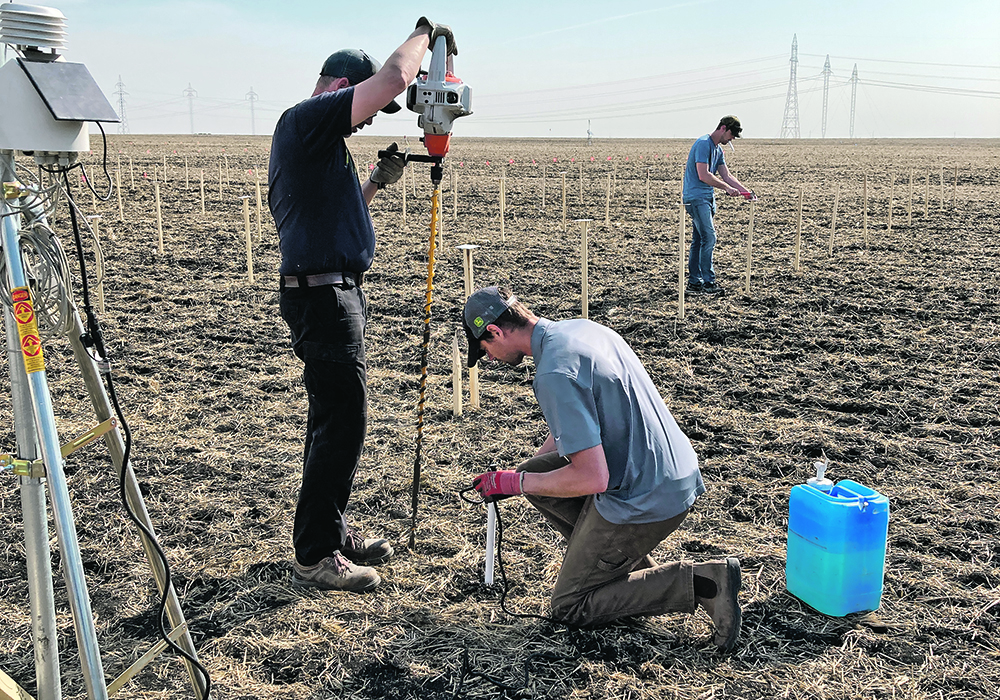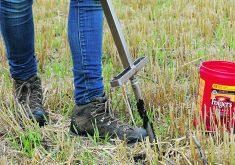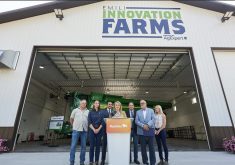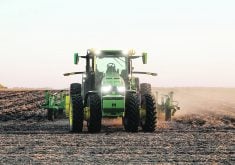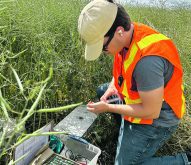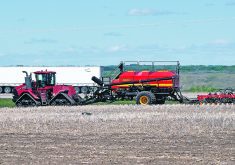When a company is developing a new product or technology for agriculture, at some point it must prove it works on a farm.
Not in a test plot or in a lab — it needs to perform at scale, on a farm.
This stage of business development is tricky because only a few producers are likely willing to try a brand new and unproven gizmo. Plus, if there’s little evidence that it works in the real world, investors are reluctant to give the company money to advance the technology.
Read Also

Saskatchewan dairy farm breeds international champion
A Saskatchewan bred cow made history at the 2025 World Dairy Expo in Madison, Wisconsin, when she was named grand champion in the five-year-old Holstein class.
“Welcome to the ‘Valley of Death,’ ” the Saskatchewan Research Council says on its website.
“This is where most potential innovations fail, where most investors become faint-hearted, and where most product or service developers give up.”
In Manitoba, there’s now a place to help digital agriculture innovators get through the Valley of Death, where they can test their data collection, imaging, robotics and other technologies at scale.
It’s called Innovation Farms, a 5,500 acre farm northwest of Winnipeg.
“We think it’s the largest, commercial scale smart farm in Canada,” said Jacqueline Keena, managing director of the Enterprise Machine Intelligence and Learning Initiative.
Better known as EMILI, the non-profit has a mandate to help Canada become a leader in digital agriculture.
As part of that mandate, EMILI manages Innovation Farms, located at a pedigreed seed farm near Grosse Isle.
EMILI uses Innovation Farms for several purposes:
- To demonstrate technologies that are already on the market.
- To test and validate new technologies to “bring them from pre-commercial to market.”
- To educate farmers and the public about digital agriculture.
“To raise the profile of how tech savvy, productive and sustainable that agriculture is,” said Keena, who added that EMILI joins with scientists and private firms to demonstrate and test the latest technologies.
“A high percentage of our projects have external collaborators. Some of those collaborators are researchers. The majority are companies and industry members, be it start-up (companies) or established companies with a new innovation.”
As an example of a project, this summer Innovation Farms is testing imaging technology that can identify different weeds and different crops.
“(It) is building this massive … dataset of prairie crops and weeds,” Keena said.
“That can be used on a whole bunch of different pieces of equipment … to distinguish between plant vs. plant using this prairie data set. (It can be) used for things like weed detection and mitigation, but also for crop scouting … and pest surveillance.”
By testing such technology at Innovation Farms, the company can make changes and improve the system before it hits the market.
“We’re not a first customer. We’re just a first, full-scale testing opportunity,” Keena said.
Innovation Farms fills a gap in the innovation pipeline because most start-up companies only have access to test plots.
Without farm-scale results showing that it works, investors are hesitant to pump cash into an unproven technology.
“(It’s) a barrier to potential investment,” Keena said.
Last month, EMILI joined a broader effort to boost digital agriculture and innovation in Canada’s agriculture sector.
EMILI became part of the Pan-Canadian Smart Farm Network, which includes the Glacier Discovery Farm Langham near Saskatoon, Lakeland College in Vermilion, Alta., the University of Saskatchewan’s Livestock and Forage Centre of Excellence (LFCE) and Manitoba Beef and Forage Initiatives north of Brandon.
The Smart Farm at Olds College in Alberta is the leader of the network.
In August, Innovation Farms will be the site of the Manitoba 4R Day to showcase sustainable fertilizer practices and technologies.
The event, a collaboration between Manitoba Agriculture, the University of Manitoba, the Canola Council of Canada, Fertilizer Canada, Enns Brothers and 4R Nutrient Stewardship, is planned for Aug. 9.
For more information, go to emilicanada.com/innovation-farms/manitoba-4r-day/.


